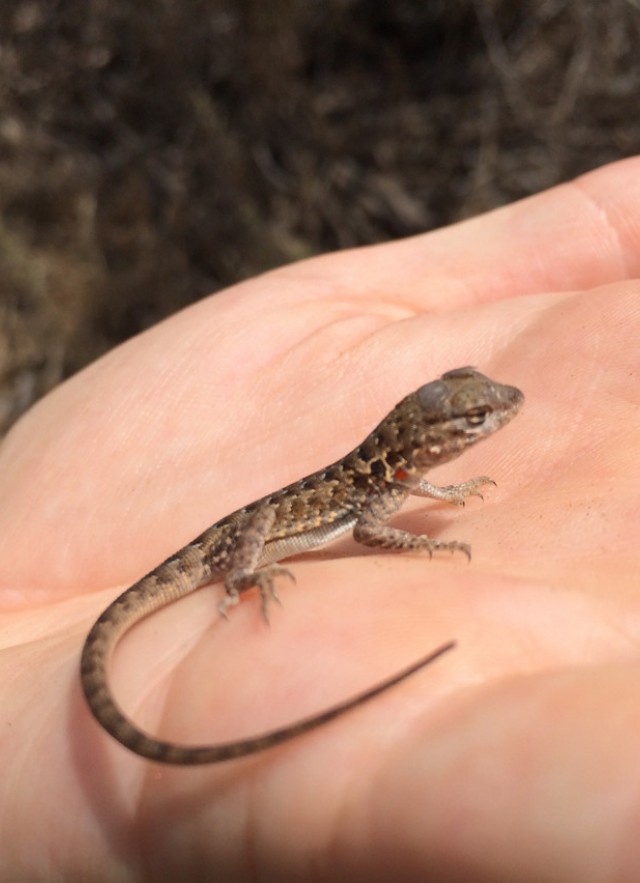'Tis the Season for Baby Lizards
Over the past few weeks, baby lizards have been hatching out of their eggs throughout Southern California.

Baby Lizards in Southern California
Over the past few weeks, baby lizards have been hatching out of their eggs throughout Southern California. Most of these baby lizards are one of two widespread species, the western fence lizard and the side-blotched lizard, but it is also hatching season for many of Southern California’s other lizard species.

Father and son citizen scientists Drew and Jude Ready observed a baby western fence lizard in Claremont on June 30th. Jude carefully picked up the tiny lizard, while Drew took a photo that he then submitted to the Reptiles and Amphibians of Southern California (RASCals)citizen science project. Western Fence Lizards are also frequently called “blue belly” lizards because of the bright blue patches on their abdomen and chin. If you are in the L.A. area and see a lizard on a rock doing “push up” displays, it is this lizard.
In Southern California, western fence lizards breed in mid to late March and the females lay eggs 2–4 weeks after that. After about two months, these eggs hatch, resulting in the many baby western fence lizards we can observe in late June and July. Western fence lizard females can lay up to three clutches of eggs per year. As a result, we can expect more tiny baby lizards for the next couple of months as subsequent clutches hatch. Hatchlings are about 1 inch long, or “1 inch SVL” in herpetological lingo. SVL stands for snout to vent length. Because many lizard species can easily drop their tails, scientists measure lizard body size excluding the tail. Thus, lizard body size is measured from the tip of the snout to the vent (aka the cloaca).
Stevie Kennedy-Gold, who has been working on several museum field projects this spring and summer, has also been documenting lizards for the RASCals project. She photographed this baby side-blotched Lizard in the Baldwin Hills. Side-blotched Lizards take on a different strategy than western fence lizards. Whereas western fence lizards live for several years, the side-blotched lizard is largely an annual species, meaning they tend to live for only about one year. Female side-blotched lizards can produce as many as eight clutches with up to eight eggs per clutch! Like the western fence lizards, side-blotched lizards start breeding in mid to late March, lay eggs a few weeks later, and these eggs hatch after 1.5–2 months. The babies are extra small with a SVL of 0.8 to 1 inch. The telltale side-blotch, which is found just behind the armpit, is often not yet very obvious in the babies, as you can see (or really … as you can’t see) in the photo above. To differentiate western fence lizards from side-blotched lizards, you often have to use relative scale size; scales are larger and pointier in the western fence lizard, whereas the scales on the backs of side-blotched lizards are smaller, almost with a pebble-like appearance. If you have trouble telling the two apart, don’t worry, just send in a photo and I or others participating in the RASCals project can help you out.
As you wander around Southern California, if you see any baby lizards, or any other lizards, snakes, turtles, frogs, or salamanders, please take a photo and email it to rascals@nhm.org so your observation can be added to the RASCals project. Happy lizarding!
(Posted by: Greg Pauly)